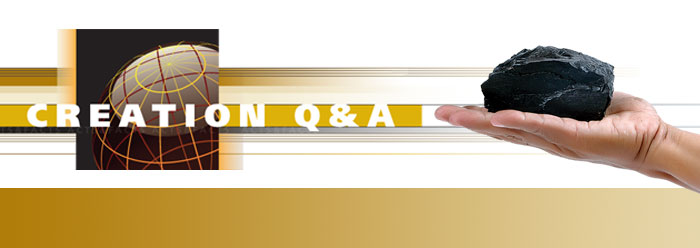Last month, the Creation Q & A column briefly answered the following question: Does radioisotope dating prove that the earth is millions of years old? We offered four reasons why radioisotope dating does not work.1 Whenever this information is presented to a live audience, someone usually asks the next question.
Q: If radiodating can be scientifically falsified, then why do most scientists continue to trust these flawed methods?
A: Often, those who ask this question assume that scientists objectively weigh all evidence as though they have no biases. But people cannot do science without some set of beliefs about origins, destiny, and meaning. Scientists choose research questions that conform to their pre-existing beliefs, introducing bias at the outset. All experimental results are likewise interpreted according to beliefs, adding more bias to an investigator’s conclusion. Secular scientists trust the million-year time ranges that faulty radiodating methods present for at least four reasons.
First, long ages fit their belief that natural processes, not God, generated man, life, the earth, and the universe. Aligning their results with their belief system can be more important than validating the reliability of radiodating. Peter foresaw that nature-only heresies like these would infect the church.2 He warned believers to refute scoffers who “willingly are ignorant of, that by the word of God the heavens were of old, and the earth standing out of the water and in the water.”3
In addition, many scientists are “men, who hold [down] the truth in unrighteousness.”4 They may be familiar with the scientific and logical evidence against radiodating, but they suppress this knowledge. In a way, they lie to themselves to ease their pretension that the Bible’s history is wrong or that the holy Creator either does not exist or is distant and unconcerned—views that help justify immorality. Some scientists accept faulty radiodating methods in order to make their sinful lifestyles feel less shameful.
Another reason scientists might cling to faulty dating methods is to retain their secular jobs. The film Expelled5 and the book Slaughter of the Dissidents6 documented credentialed scientists who found their names blacklisted within the scientific community after they dared to question Darwinian dogma. Sadly, this world may never know what fruitful contributions they could have made. Outcasts serve as examples for their peers, demonstrating the consequences of open dissent from status quo doctrines such as dating the earth in millions of years.
Finally, many scientists have never encountered a reason to distrust radiodating. Geology textbooks do not explain its shortcomings, so scientists are not taught to question the results of radiodating. Often after ICR events, scientists will express surprise that they had achieved advanced degrees without ever hearing the specific, legitimate reasons to distrust radiodating.
Those who trust incorrect radiodating age estimates may purposefully limit their knowledge to concepts consistent with their secularized beliefs or sinful choices. Some fear job loss, while others have never heard or fathomed an alternative.
References
-
In summary, the four reasons we explained in the February Acts & Facts were:
1) These methods assume that the system’s decay rate is always constant, but experiments show decay rates do fluctuate.
2) Radioisotope methods often yield grossly old ages for rocks known to be young.
3) Excessive helium atoms emitted by radiodecay are found trapped in granite crystals. The helium atoms should have escaped the crystals within thousands of years, thus radioisotopes in granites decayed much faster in the past than they do today.
4) Short-lived polonium radiohalos found next to uranium radiohalos must have formed within a window of several weeks while the granite was at the right temperature to record them. - See 2 Peter 2:1.
- 2 Peter 3:5.
- Romans 1:18.
- Stein, B. 2008. Expelled: No Intelligence Allowed. DVD. Directed by Nathan Frankowski. Premise Media Corporation, L.P.
- Bergman, J. 2008. Slaughter of the Dissidents. Southworth, WA: Leafcutter Press.
* Mr. Thomas is Science Writer at the Institute for Creation Research.
Cite this article: Thomas, B. 2013. Why Do Scientists Trust Flawed Methods? Acts & Facts. 42 (3): 19.




















